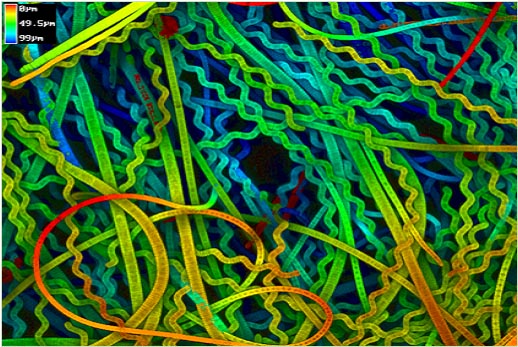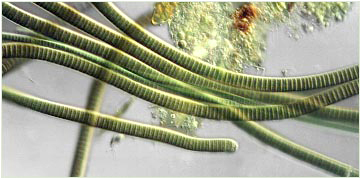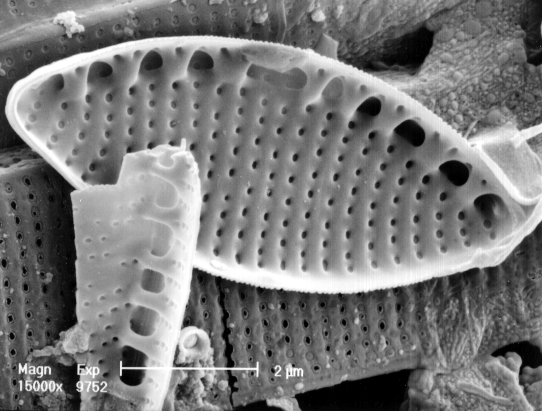| PHOTOTROPHIC BIOFILMS OF ITALIAN WWTP | ||
|
Phototrophic
biofilms develop on every submerged surface of secondary treatment tanks
of the Fiumicino Airoport (Rome, Italy) wastewater treatment plant (WWTP).
Microalgae and cyanobacteria are commonly associated with heterotrophic
microorganisms and enmeshed in a “glue-like” exopolymeric matrix. In
order to better understand bioremediation potential of autochthonous
biofilms, we focus on diversity (structure) and function of these
surface-associated communities. We apply a range of microscopic
techniques for composition and productivity of phototrophs and for the
study of biofilm development on artificial substrata using CLSM and FISH.
Matrix exopolysaccharides play an important role in adhesion processes
and flux of substances, we analyse their monosaccharidic composition by
RP-HPLC and the physico-chemical characteristics by means of circular
dichroism. Specific objectives cover the assessment of N and P retention
capacity of biofilms as their photosynthetic performance via the
recording of P/I (Photosynthetic versus Irradiance) curves.
Application of these results is foreseen in the field of algal biomass
production, nutrients removal from effluent waters and bio-medical use
of cyanobacterial exopolysaccharides. |
||

|

|

|